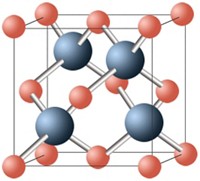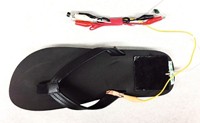Advertisement
Grab your lab coat. Let's get started
Welcome!
Welcome!
Create an account below to get 6 C&EN articles per month, receive newsletters and more - all free.
It seems this is your first time logging in online. Please enter the following information to continue.
As an ACS member you automatically get access to this site. All we need is few more details to create your reading experience.
Not you? Sign in with a different account.
Not you? Sign in with a different account.
ERROR 1
ERROR 1
ERROR 2
ERROR 2
ERROR 2
ERROR 2
ERROR 2
Password and Confirm password must match.
If you have an ACS member number, please enter it here so we can link this account to your membership. (optional)
ERROR 2
ACS values your privacy. By submitting your information, you are gaining access to C&EN and subscribing to our weekly newsletter. We use the information you provide to make your reading experience better, and we will never sell your data to third party members.
Materials
High-Quality Graphene Enables Flexible Circuits
Electronics: Researchers use an improved process for making graphene and a new transistor design to build bendable telecommunications circuits that switch at high speeds
by Katherine Bourzac
August 7, 2014

To someday develop wearable wireless electronics or smart, bendable medical implants, engineers need flexible integrated circuits that can send and receive telecommunication signals. Such circuits produce these signals by switching on and off rapidly—billions of times per second. Now, researchers in Taiwan have demonstrated they can build circuits made of graphene that switch at speeds of 32 GHz, which are some of the fastest for flexible electronics to date (ACS Nano 2014: DOI: 10.1021/nn5036087). Although the team hasn’t yet made a full wireless device, their circuits show that it should be possible to make a flexible one out of graphene.
The telecommunications circuits inside cell phones and other electronics today are built on rigid silicon chips. To make fully flexible devices, the silicon in these chips needs to be replaced with a flexible material that has good electrical conductivity, such as graphene. It’s a huge materials science challenge, says Po-Wen Chiu, an electrical engineer at National Tsing Hua University, in Taiwan. “It’s very difficult to make integrated circuits on a flexible substrate.”
Chiu’s group made the new circuits by first growing high-quality graphene sheets using a method they had developed over the past seven years. Electrical charges usually move smoothly through graphene, but grain boundaries in the material can disrupt this charge flow. The fewer such defects in the graphene, the faster charges can move, and the faster the resulting circuit will be. Chiu’s group grows their sheets of graphene on copper using chemical vapor deposition. Instead of using a typical continuous flow of hydrocarbon gas to do so, they pulse in hydrocarbon gases every few seconds, which leads to the formation of larger grains and reduces the number of grain boundaries. Then they use an etching process to lift off the graphene and transfer it to a piece of the flexible plastic polyethylene terephthalate.
Another key to their circuits, Chiu says, is the design of their transistors. All transistors consist of four parts: a channel and three electrodes called the source, drain, and gate. The team used their high-quality graphene to make the transistors’ channels.
Basically, a circuit applies a voltage to the gate electrode to switch the channel on and off. In the on state, charges can flow across the gate from the source electrode and then out the drain. To make fast-switching transistors, engineers use narrow channels to speed up the movement of charge across them. Chiu’s team designed a new shape for the gate electrode that allowed them to move the source and drain electrodes closer together, which meant they could shrink the channel.
Chiu’s group used these transistors to build a few simple telecommunications components, including a kind of circuit called a frequency mixer. The devices can switch at high frequencies when bent about 2.5%—not a large amount, but it’s an improvement over silicon, which can’t bend at all.
The researchers’ fabrication techniques allow them to achieve this very good device performance, says Deji Akinwande of the University of Texas, Austin, who also develops flexible graphene circuits. The 32-GHz switching frequency is greater than what cell phones and other consumer devices require, which is about 10 GHz, he says. But higher frequencies could allow devices to transmit more data at once, meaning a crisper picture when streaming video, for example. To move these circuits toward commercialization, Akinwande says the researchers have to demonstrate that their methods can be used to manufacture flexible electronics on a large scale.





Join the conversation
Contact the reporter
Submit a Letter to the Editor for publication
Engage with us on Twitter